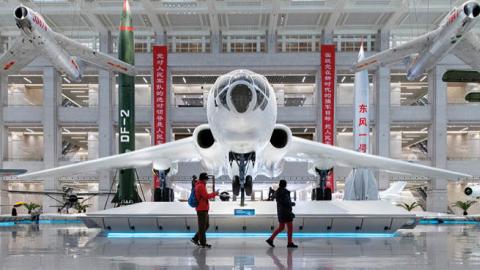In partnership with the Andrew W. Marshall Foundation, Hudson Institute hosted Arthur Tellis as the inaugural 2021 Andrew W. Marshall Scholar. The Andrew Marshall Scholar program awards a one-year research grant dedicated to promoting innovative thinking in the field of national security.
The US-China rivalry is likely to be the fulcrum around which international affairs are structured in the twenty-first century, akin to the Cold War from 1947 to 1991. This rivalry, like its predecessor, emerges from divergent geopolitical interests and imperatives. While the Chinese Communist Party’s aims are many, various, and subject to change, they include its continued control of the Chinese State; economic and technological modernization and leadership; internal order; complete union with Taiwan on Beijing’s terms; certain territorial concessions from its neighbors; and the disestablishment of security arrangements across the Indo-Pacific that it views as threatening and trammeling. The latter three are in direct conflict with US interests and imperatives in the Indo-Pacific: prohibiting China’s unilateral modification of the status quo vis-à-vis Taiwan; preserving the sovereignty and territorial integrity of its allies and partners; and maintaining its military partnerships and presence in the region. These antithetical interests animate a larger struggle for hegemony in the Indo-Pacific and serve as the terms on which this contest will be decided.
Explanations of the rivalry as an ideological contest or a competition born from competing economic interests are less compelling by comparison. The United States and China are motivated to an extent by ideological imperatives, but these do not appear to propel or serve as the central stakes for the rivalry as much as they affect each’s disposition toward the other. Long-standing trade, investment, and commercial disputes and competition, meanwhile, are not so substantial that they motivate the rivalry. While these issues are impactful to niche communities and conspicuous to national policymakers, they are not particularly consequential for national prosperity. The logic of competition, trade, and globalization, in fact, suggests that the US-China commercial relationship is mutually beneficial, notwithstanding each’s concerns with the other’s economic statecraft and market-leading firms.
In their geopolitical rivalry, there are a few key forces or contests of interest: path dependence, regime continuity, prudent strategy, third-party alignments, and the balance of military forces in the Indo-Pacific. Each affects the United States’ and China’s ability to achieve their ends and shapes their rivalry. Economic and technological statecraft, by contrast, is largely peripheral to these ends as it does not effectively advance political objectives relevant to territory, borders, security architectures, and national defense. That is not to suggest that economic and technological factors are irrelevant, however; they shape, constrain, and advantage the United States and China across their rivalry’s key forces and contests of interests.
Particularly noteworthy are economic and technological factors’ impact on the military balance. Tradition and intuition hold that nations with bigger and more advanced economies are better postured to resource, procure, and manufacture military equipment and can therefore generate greater military power. In the case of the US-China military competition, however, total military power is less relevant than the specific military balance in the Indo-Pacific, in which the distribution and strength of forces in the theater, the capability and reliability of key materiel inputs of outsized importance, and the operational concepts and tactics with which each’s military fights are more important. Total military power—and in particular greater military equipment—matters on the margin, of course, if only because the party with the greater mass and quality of materiel will be able to retain more forces in the Indo-Pacific, maintain more of these key materiel inputs, and develop novel operational concepts and tactics tailored to their superior materiel.
Neither the United States’ nor China’s total economic production, public balance sheet, high-technology commercial firms, and scientific production are likely to provide a decisive or lasting advantage on this count. Each country’s economy can support substantially greater military spending, limiting the extent to which one can derive an advantage from the other’s more binding constraints. The capacity and maturity of each country’s defense industrial base is of greater relevance, but these are flexible quotients that investment can improve. This elasticity of defense production suggests that microeconomic endowments may be binding in the short run but variable in the longer run, meaning that policy choices—rather than existing economic endowments—constrain military production. Technological endowments, informing each country’s capacity for broad innovation, are of similarly bounded importance because military technology is somewhat narrow and other factors, such as military procurement processes and inflexibility in concepts of operation, limit the extent to which superior technology translates into military advantage.
The fundamental result of this argument is that the concerns that propel the emerging US-China economic and technological competition are ultimately not all that relevant to the matters at the core to their rivalry and to the instruments of national power most relevant to these issues. The US should therefore be wary of policies ostensibly demanded by economic and technological competition and may find its interests better served by limiting its rivalry with China to military competition driven by its core geopolitical interests.

















